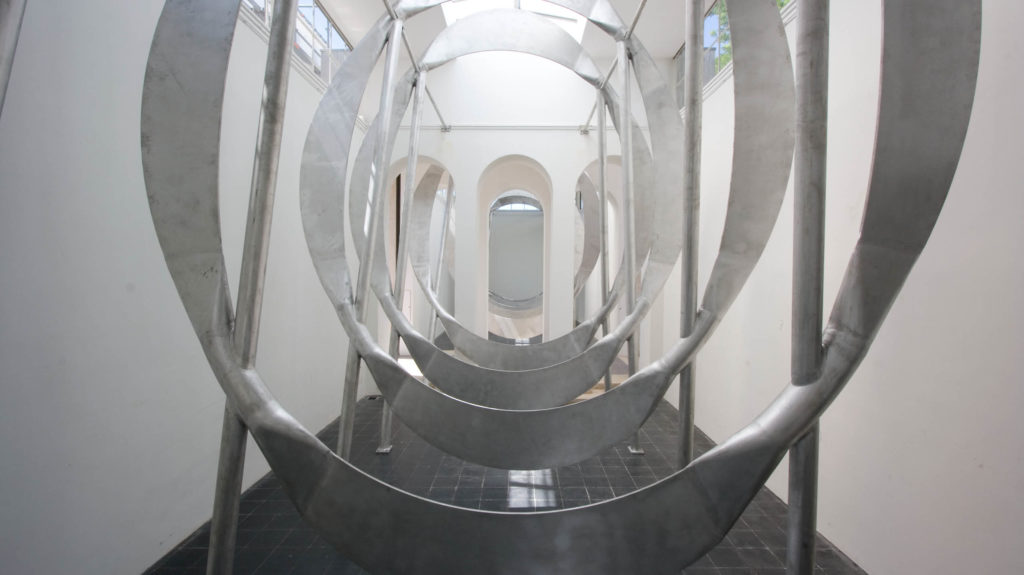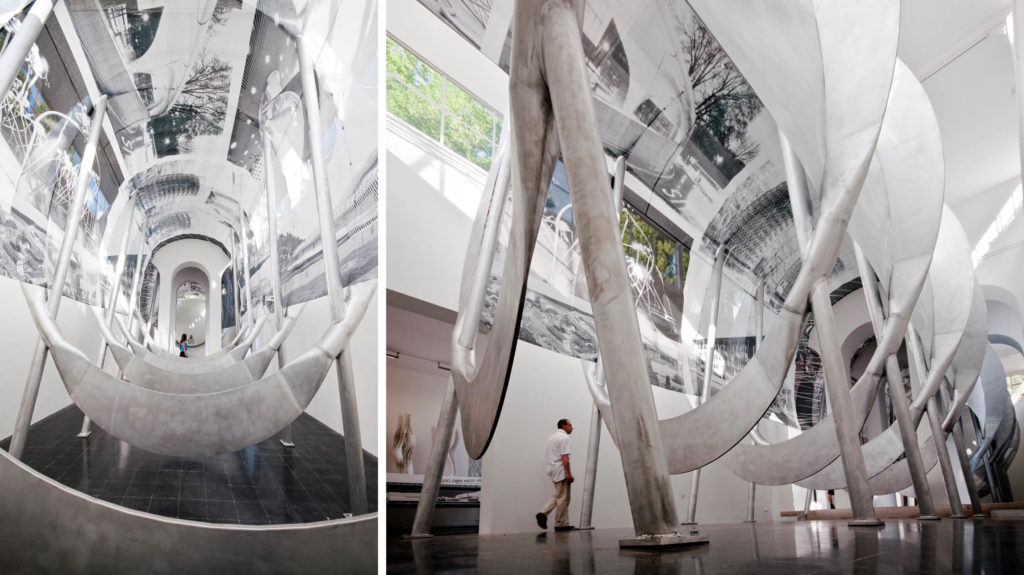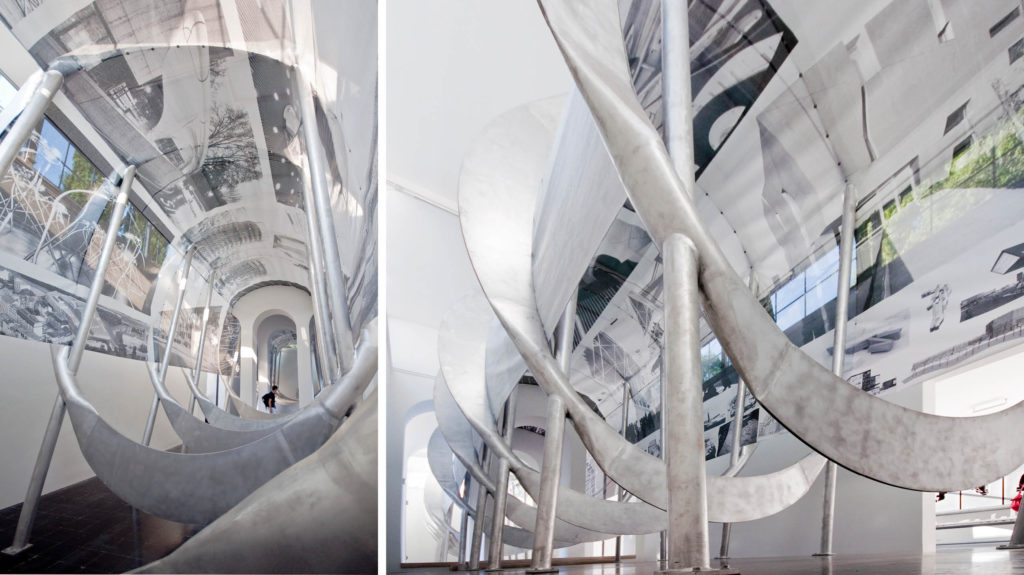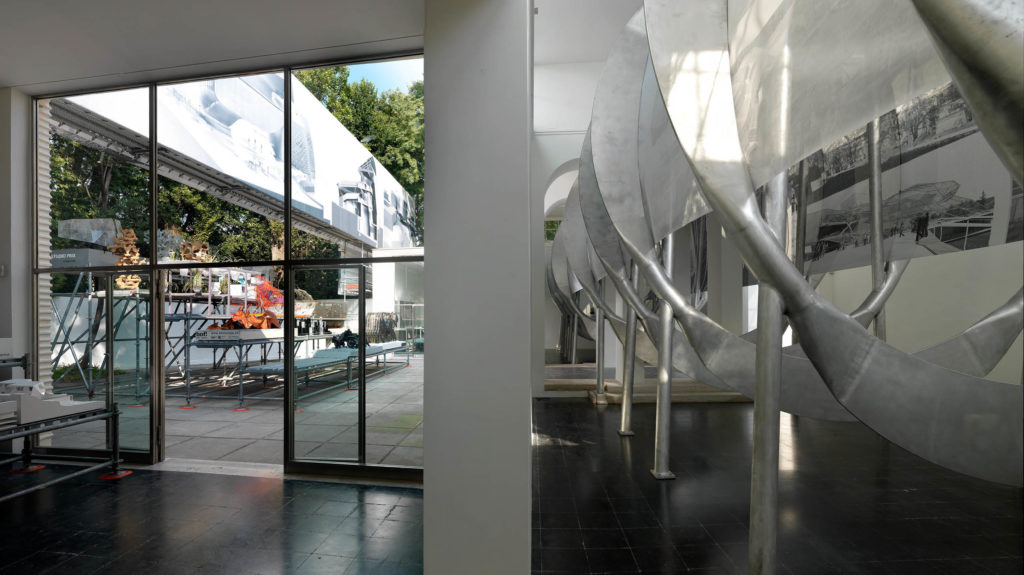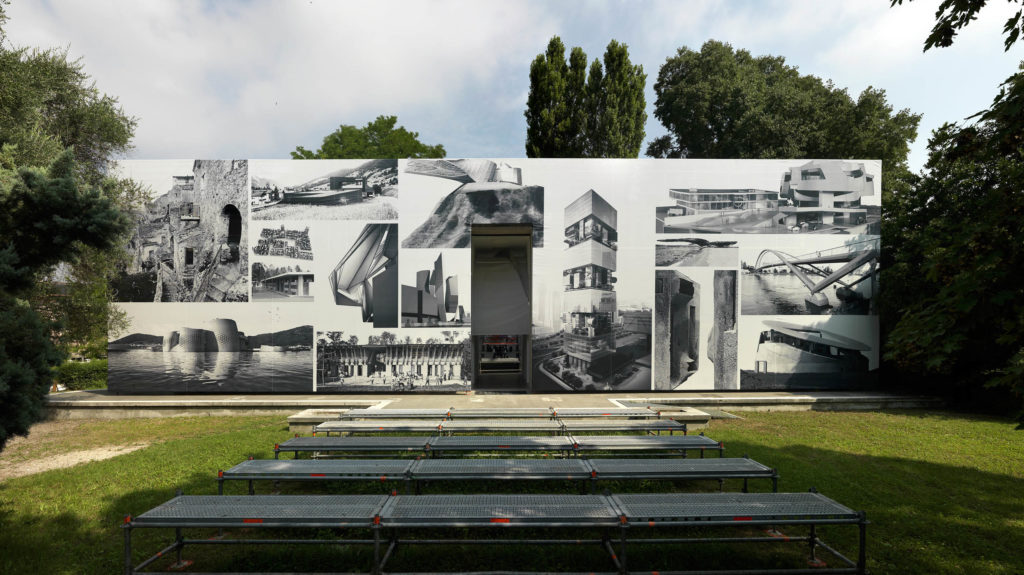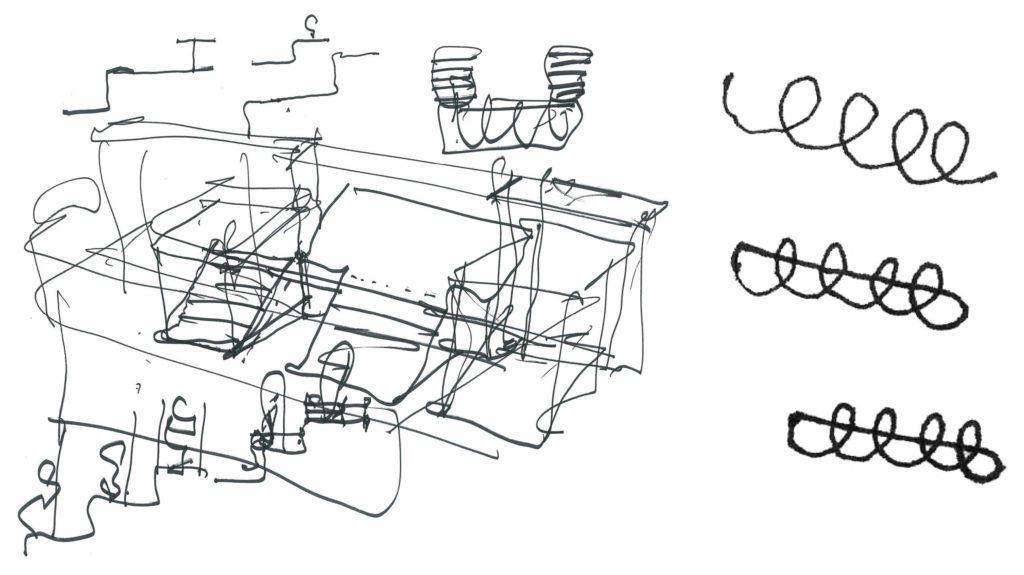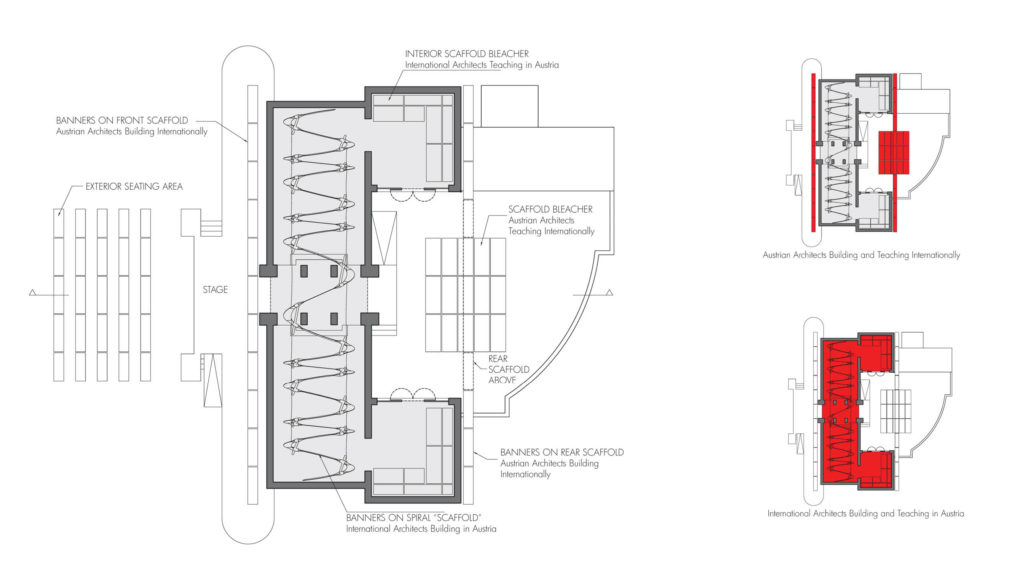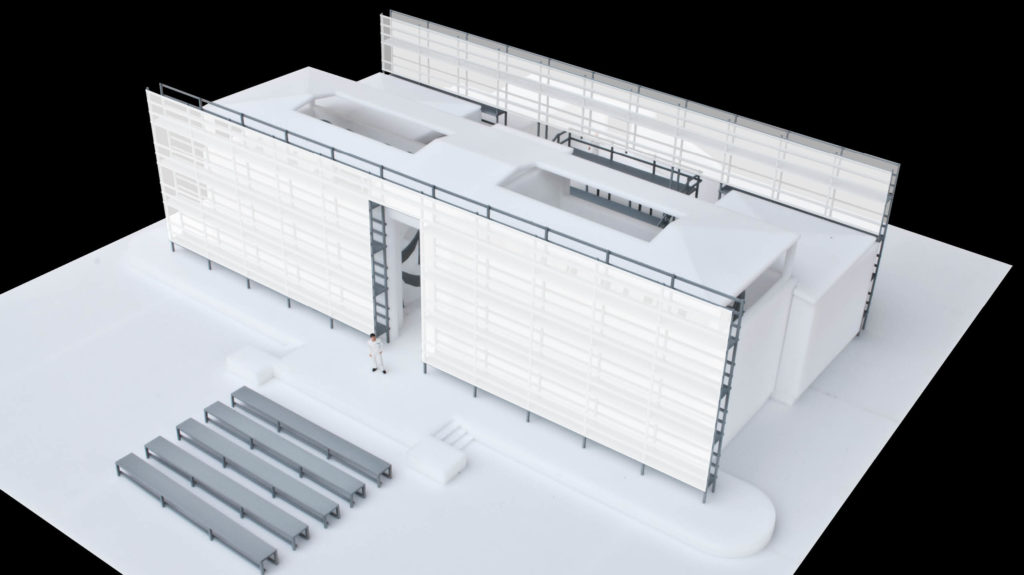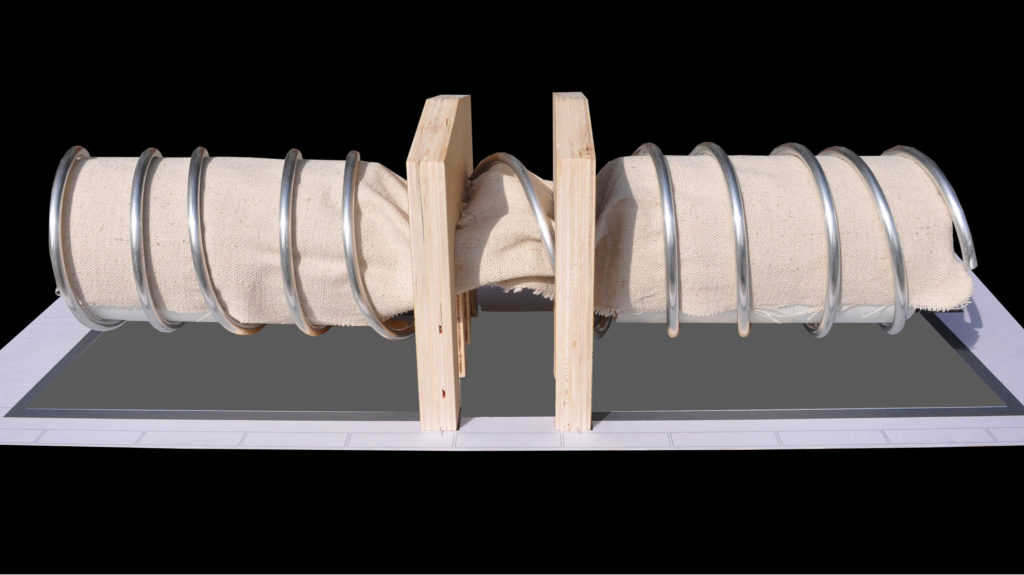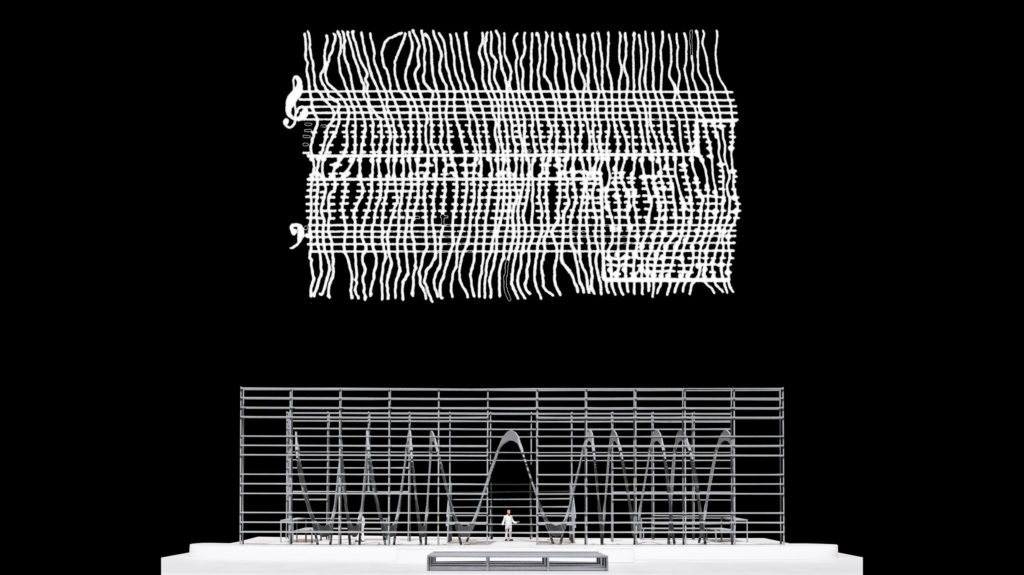Location
Venice, Italy
Size
200 square meters
Dates
2010
Construction Systems
Aluminum, Construction Scaffolding, Vinyl Canvas
Key Staff
Eric McNevin, Jose Herrasti
Key Consultants
Process and Assembly: Alexis Rochas
Book Design: Betty Kasis
Structural: Buro Happold
Spiral Fabrication: Metal Supply Inc.
Exhibit Coordination: M+B Studio
Local Architect: Spedstudio
Photographer
Eric McNevin, Piero Codato
Architecture at its best suggests that the world could be other than it is, that the world progresses, and that architecture can facilitate that progress: New prospects for the city. New visions for design and building. A new built world for the inhabitants of a new world. Hope and optimism. That’s the promise.
Innovative conceptions from Austria’s architects extend around the globe, from East Asia to Europe, the Middle East, Africa, Central and South America. Reciprocally, contributions from our colleagues abroad are constructed in Austria. Austria re-imagines the art of building and city making in the world. Foreign architects re-imagine buildings and cities in Austria. Austria exports. Austria imports. New architecture “under construction”.
That dual capacity to contribute inventively and to welcome new possibilities openly are the essential strength of the Austrian architectural mind, and the subject of this exhibition proposal for the Austrian Pavilion in Venice, 2010.
Austrian culture at its best is culture “under construction” — re-conceiving, re-evaluating, re-imagining its meanings. That on-going exploration can never appear simply as a homogeneous body of built work. Rather there are several powerful, alternative prospects which reflect an enduring debate regarding priorities: Architecture as poetry? Architecture as sociology? Architecture as culture? Architecture as urbanism? Architecture as an amalgamation of possibilities?
Architecture and urbanism propel cultures, re-inform sociologies, and explore technologies. Austrian architects at work internationally, and international architects at work in Austria are producing investigatory work which challenges the conventional pro forma with respect to aesthetics, technical means, relationships of art/media/architecture, ordering and organizational strategies, and alternative energy systems. Architects are also at work on the re-conception of the systems and methods that have traditionally governed contemporary cities – transportation, housing, and the use of natural resources; the inter-relationship of social, economic, and political concerns with the form of the city; and the integration of imported conceptions with local customs, traditions, and aspirations.
We propose to present the 2010 exhibition in the Austrian Pavilion at the Venice Biennale as a scaffolded building “under construction”, suggesting an international design and construction discourse in process.
We propose to install modular, open scaffolding running the entire length of the entry elevation of the Pavilion, suggesting a building mid-way in the construction process.
Similarly, in the interior of the Pavilion, we intend to mount additional open scaffolding through the entry space and the adjacent wings on either side.
The curatorial objective at the Austrian Pavilion is to use an imaginative design means to communicate the most imaginative prospects for contemporary Austrian architecture and urban design around the world as well as to represent Austria as both a unique repository of architectural talent, and an attentive welcomer of a new spirit of foreign architectural invention.
